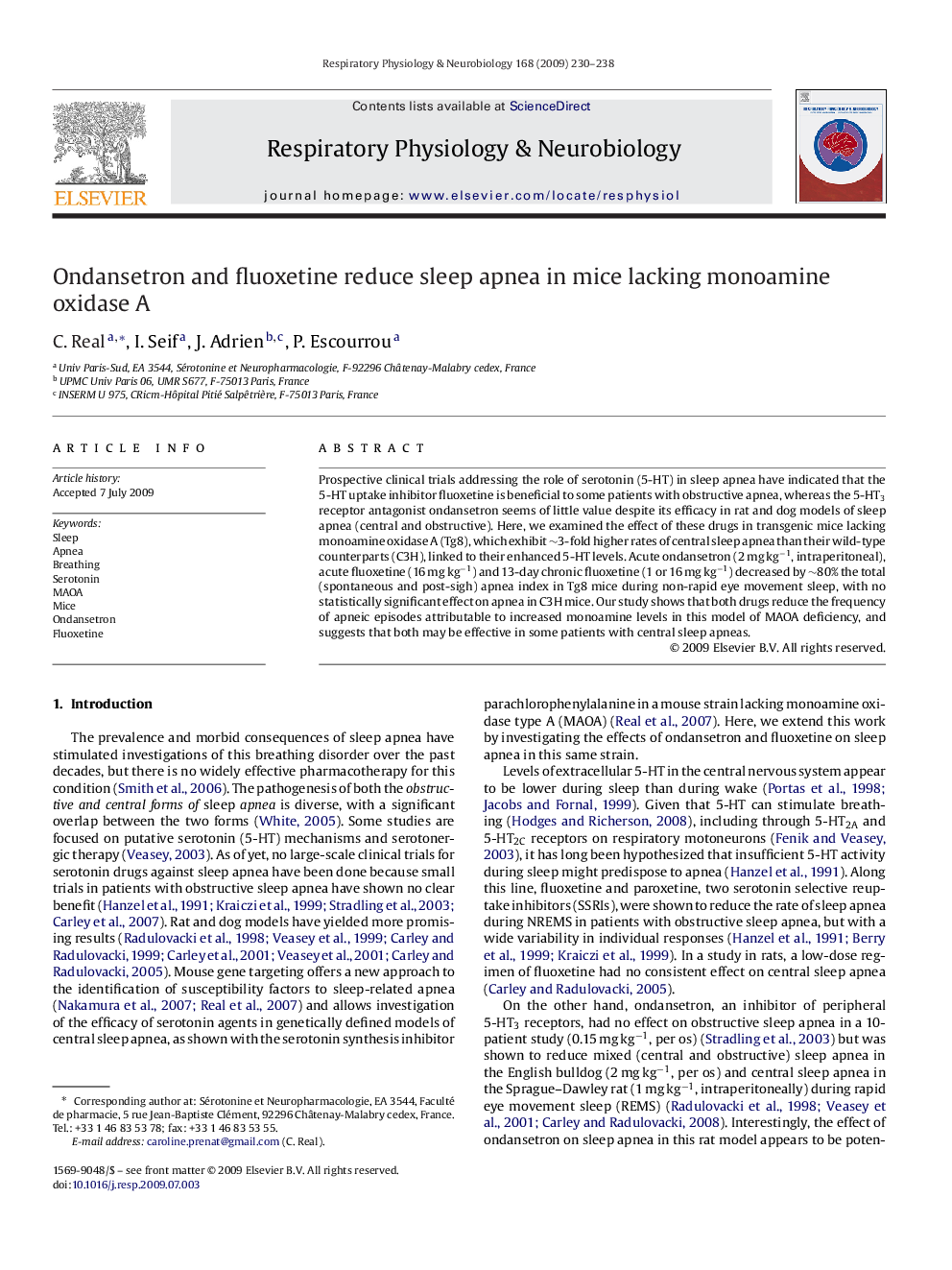| کد مقاله | کد نشریه | سال انتشار | مقاله انگلیسی | نسخه تمام متن |
|---|---|---|---|---|
| 2847917 | 1167396 | 2009 | 9 صفحه PDF | دانلود رایگان |

Prospective clinical trials addressing the role of serotonin (5-HT) in sleep apnea have indicated that the 5-HT uptake inhibitor fluoxetine is beneficial to some patients with obstructive apnea, whereas the 5-HT3 receptor antagonist ondansetron seems of little value despite its efficacy in rat and dog models of sleep apnea (central and obstructive). Here, we examined the effect of these drugs in transgenic mice lacking monoamine oxidase A (Tg8), which exhibit ∼3-fold higher rates of central sleep apnea than their wild-type counterparts (C3H), linked to their enhanced 5-HT levels. Acute ondansetron (2 mg kg−1, intraperitoneal), acute fluoxetine (16 mg kg−1) and 13-day chronic fluoxetine (1 or 16 mg kg−1) decreased by ∼80% the total (spontaneous and post-sigh) apnea index in Tg8 mice during non-rapid eye movement sleep, with no statistically significant effect on apnea in C3H mice. Our study shows that both drugs reduce the frequency of apneic episodes attributable to increased monoamine levels in this model of MAOA deficiency, and suggests that both may be effective in some patients with central sleep apneas.
Journal: Respiratory Physiology & Neurobiology - Volume 168, Issue 3, 30 September 2009, Pages 230–238